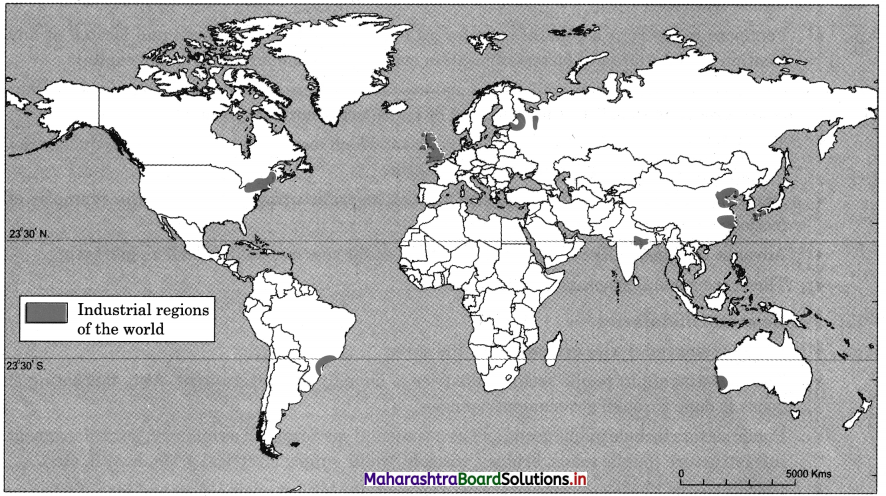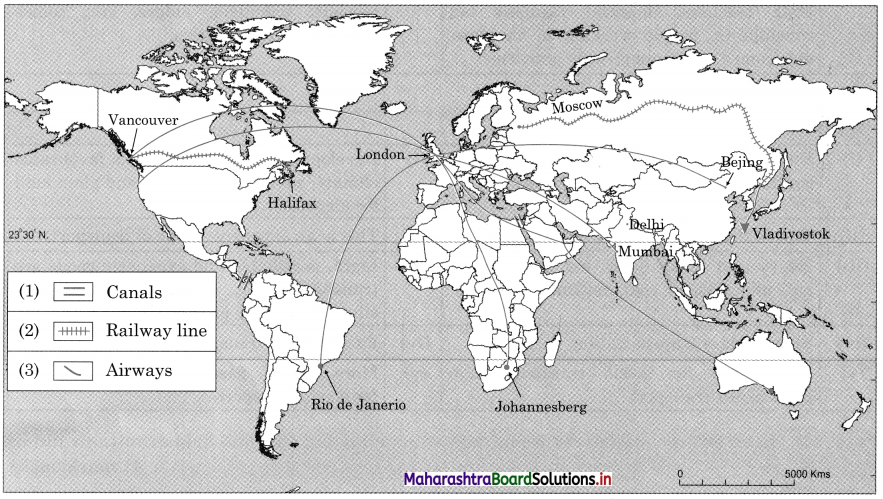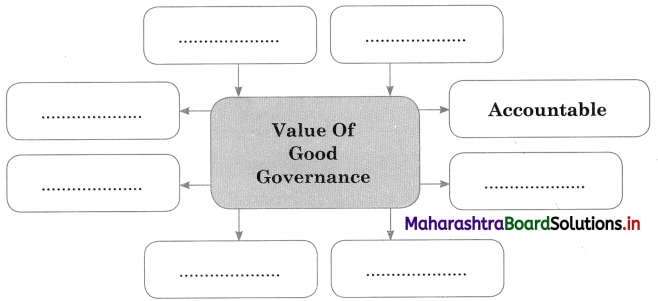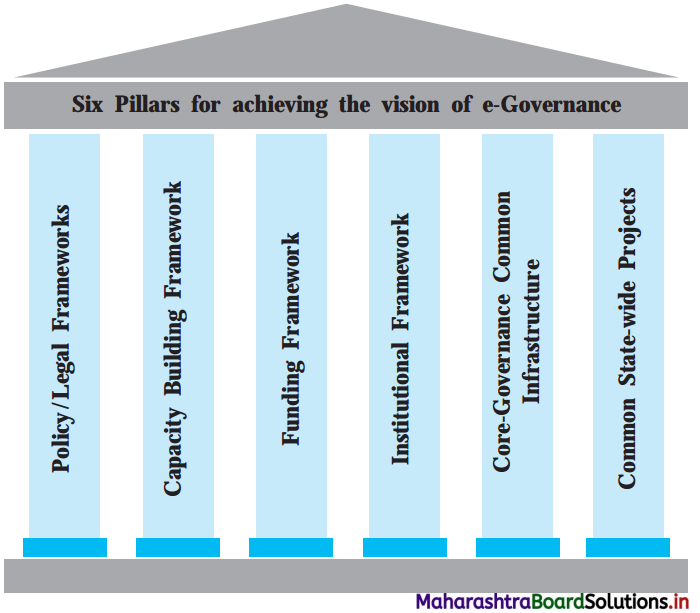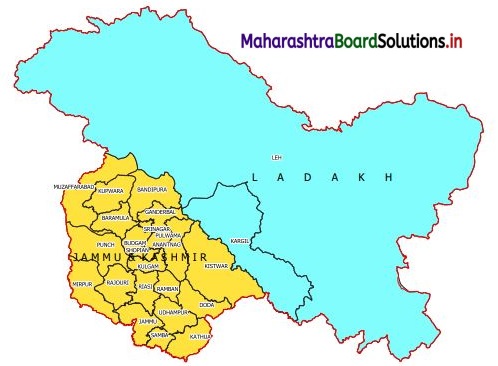Balbharti Maharashtra State Board 11th OCM Important Questions Chapter 3 Small Scale Industry and Business Important Questions and Answers.
Maharashtra State Board 11th Commerce OCM Important Questions Chapter 3 Small Scale Industry and Business
Select the Correct option and rewrite the sentence
Question 1.
Small Scale Industries play an important role in ……………. countries.
(a) developed
(b) developing
(c) advanced
Answer:
(b) developing
Question 2.
Traditionally a small scale industries are those using power with less than ……………… employees.
(a) 20
(b) 30
(c) 50
Answer:
(c) 50
![]()
Question 3.
……………….. is second largest industry which creates huge employment.
(a) SSI
(b) Reliance Ltd.
(c) Indian Railways
Answer:
(a) SSI
Question 4.
……………….. of people from rural to urban is reduced by small scale industries.
(a) Immigrations
(b) Migrations
(c) Re-migrations
Answer:
(b) Migrations
Question 5.
Small Scale Industries are ……………….. in operation.
(a) rigid
(b) flexible
(c) static
Answer:
(b) flexible
Question 6.
Small Scale Industries uses ……………….. technology.
(a) outdated
(b) advanced
(c) future
Answer:
(a) outdated
Question 7.
………………. resources are used by SSI.
(a) Foreign
(b) City
(c) Domestic
Answer:
(c) Domestic
Match the pairs
Question 1.
| Group A | Group B |
| (a) Small Manufacturing Sector | (1) Investment more than Rs 2 crores but does not exceed Rs 5 crores |
| (b) Modern Small Scale Industries | (2) SSI |
| (c) Large Employment | (3) Capital problem |
| (d) High absenteeism | (4) Investment does not exceed Rs 25 lakhs |
| (e) Medium Services Sector | (5) Electric Appliances |
| (6) Labour problem | |
| (7) Investment does not exceed Rs 10 lakhs | |
| (8) Sericulture | |
| (9) L&T |
Answer:
| Group A | Group B |
| (a) Small Manufacturing Sector | (4) Investment does not exceed Rs 25 lakhs |
| (b) Modern Small Scale Industries | (5) Electric Appliances |
| (c) Large Employment | (2) SSI |
| (d) High absenteeism | (6) Labour problem |
| (e) Medium Services Sector | (1) Investment more than Rs 2 crores but does not exceed Rs 5 crores |
Give one word/phrase/term
Question 1.
Tiruppur a city located in state of Tamil Nadu is famous for which export.
Answer:
Textile export
Question 2.
Industries which requires low gestation period.
Answer:
Small Scale Industries
![]()
Question 3.
Part of rural industry based on agricultural products.
Answer:
Agro based industries
Question 4.
Moving of people from one place to another in search of job.
Answer:
Migration
Question 5.
Regular interruption of electricity.
Answer:
Load shedding
Question 6.
Life blood of the enterprise.
Answer:
Finance
Question 7.
Assessment of a project.
Answer:
Project Appraisal
Question 8.
Procedure of recruitment, training and placement.
Answer:
Staffing.
State True or False
Question 1.
Small Scale Industries increases import of raw materials from foreign countries.
Answer:
False
Question 2.
Tiruppur contribute to export textiles and earn valuable foreign exchange for India.
Answer:
True
Question 3.
Japan became major economic power because of many small entrepreneurs after second world war.
Answer:
True
Question 4.
Nearly 60% of the industrial exports are contributed by SSI.
Answer:
False
![]()
Question 5.
Small Scale Industries lead to inequalities of income, wealth and power.
Answer:
False
Question 6.
Small Scale Industries are more flexible.
Answer:
True
Find the odd one
Question 1.
Manufacturing Sector, Services Sector, Construction Sector
Answer:
Construction Sector
Question 2.
Does not exceed ?10 lakhs, Does not exceed Rs 25 lakhs, Does not exceed Rs 2 crores.
Answer:
Does not exceed Rs 25 lakhs
Question 3.
Job opportunities, Regional Balance, Increases Migration
Answer:
Increases Migration
Question 4.
Labour Problem, Marketing problem, Problem of transport, Domestic problem
Answer:
Domestic problem
Question 5.
Selection of product, Selection of place, Selection of House
Answer:
Selection of House.
Complete the sentences
Question 1.
Problem of is reduced or minimized by SSI.
Answer:
migration
Question 2.
Gestation period is low for industries.
Answer:
Small Scale
Question 3.
means the assessment of a project.
Answer:
Project appraisal
Question 4.
SSI provides raw material, semi finished goods to
Answer:
Large Scale
![]()
Question 5.
place from Tamil Nadu export textiles.
Answer:
Tiruppur
Question 6.
method of production is used by SSI.
Answer:
Old and outdated.
Select the correct option
(Modern Small Scale Industries, Challenges before Small Scale Industries, Traditional Small Scale Industries, Importance of Small Scale Industries)
| Group A | Group B |
| (1) Hand loom, Handicraft, Coir, Sericulture | ——————- |
| (2) —————– | Bicycles parts, sewing machines, Blades, Razor, Electric Appliances, Spare parts |
| (3) Job opportunities, Regional balance, Reduce migration, Maximum use of Natural Resources | ——————- |
| (4) ————– | Load-shedding, voltage fluctuation. |
Answer:
| Group A | Group B |
| (1) Hand loom, Handicraft, Coir, Sericulture | Traditional Small Scale Industries |
| (2) Modern Small Scale Industries | Bicycles parts, sewing machines, Blades, Razor, Electric Appliances, Spare parts |
| (3) Job opportunities, Regional balance, Reduce migration, Maximum use of Natural Resources | Importance of Small Scale Industries |
| (4) Challenges before Small Scale Industries | Load-shedding, voltage fluctuation. |
Answer in one sentences
Question 1.
What are the challenges before Small Scale industries?
Answer:
Old and outdated technology, finance, marketing, load shedding, voltage fluctuation, sickness, etc. are the challenges before Small Scale Industries.
Question 2.
What are the sectors of business classification as per SSI?
Answer:
There are two sectors of business as per SSI i.e.
- Manufacturing sector
- Services sector.
Question 3.
What is the classification of Small Scale Industries?
Answer:
Small Scale Industries are classified into two i.e. Traditional Small Scale Industries and Modern Small Scale Industries.
![]()
Correct the underlined word and rewrite the following sentences.
Question 1.
SSI is first largest industry which creates huge employment.
Answer:
SSI is second largest industry which creates huge employment.
Question 2.
Migration of people from rural to urban can be increase due to SSI.
Answer:
Migration of people from rural to urban can be reduced due to SSI.
Question 3.
Many Small Scale Industries provide finished goods to large scale industries.
Answer:
Many Small Scale Industries provide semi finished goods to large scale industries.
Question 4.
India is facing labour scarcity problem.
Answer:
India is facing labour problem.
Question 5.
Nearly 60% of industrial exports are contributed by SSI.
Answer:
Nearly 40% of industrial exports are contributed by SSI.
Study the following case/situation and express your opinion.
1. Mr. Rahim is keenly interested in starting Small Scale business. But he is worried about the challenges before Small Scale business. Guide him about the solutions to face these challenges.
Question 1.
Guidelines to start a small scale business:
Answer:
1. Method of Production : It is said that small scale industries use old methods of production Mr. Rahim can improve the method of production by using new technology. He can purchase the new technology at affordable rate and give training to the workers so that they can improve the skills and in turn increase the production.
2. Finance : Rahim can get information about various schemes given by government to raise finance. He can also compare the rate of interest of various financial institutes and take loan at a lower rate of interest.
3. Raw Material : Rahim can start business in area near by to the availability of raw material so that he can save the cost of transportation of raw material. If the cost of raw material decreases he will not have to compromise on the quantity and quality of raw material.
4. Labour Problem : Rahim can give training to the workers so that they can increase the productivity. Skilled workers can work more efficiently. Rahim should also provide with job security so that workers do not leave the job and experienced workers can increase productivity.
5. Marketing Problem : Rahim should have thorough study of need of the customer in the market. He should have all market updates so that he can make changes according to the requirement of customers. He can do market survey with use of latest technology i.e. Internet and WhatsApp. He can make use of these technology for advertising of his product also.
![]()
6. Transportation : As stated in point no. (c) Rahim can start business in area nearby to the availability of raw material so that he can save the cost of transportation of raw material. He can also keep the cost of the product less and then add the cost of transportation afterwards so that cost of his product will look less.
7. Sickness : Rahim will have to take care of the credit system which he is going to follow. It is advisable that he sells the goods on cash basis and not on credit basis. If he gives it on credit he should be good at follow up. While purchasing raw material he can take it on credit basis so that he gets adequate working capital to use. If he gets sufficient working capital he can produce goods on time and the industry will not become sick.
8. Globalisation : Rahim is to be aware about the various competitive products and other similar products which are there in the market. He will have to be updated with the latest things and latest prices and make changes in his small unit regularly as and when required.
